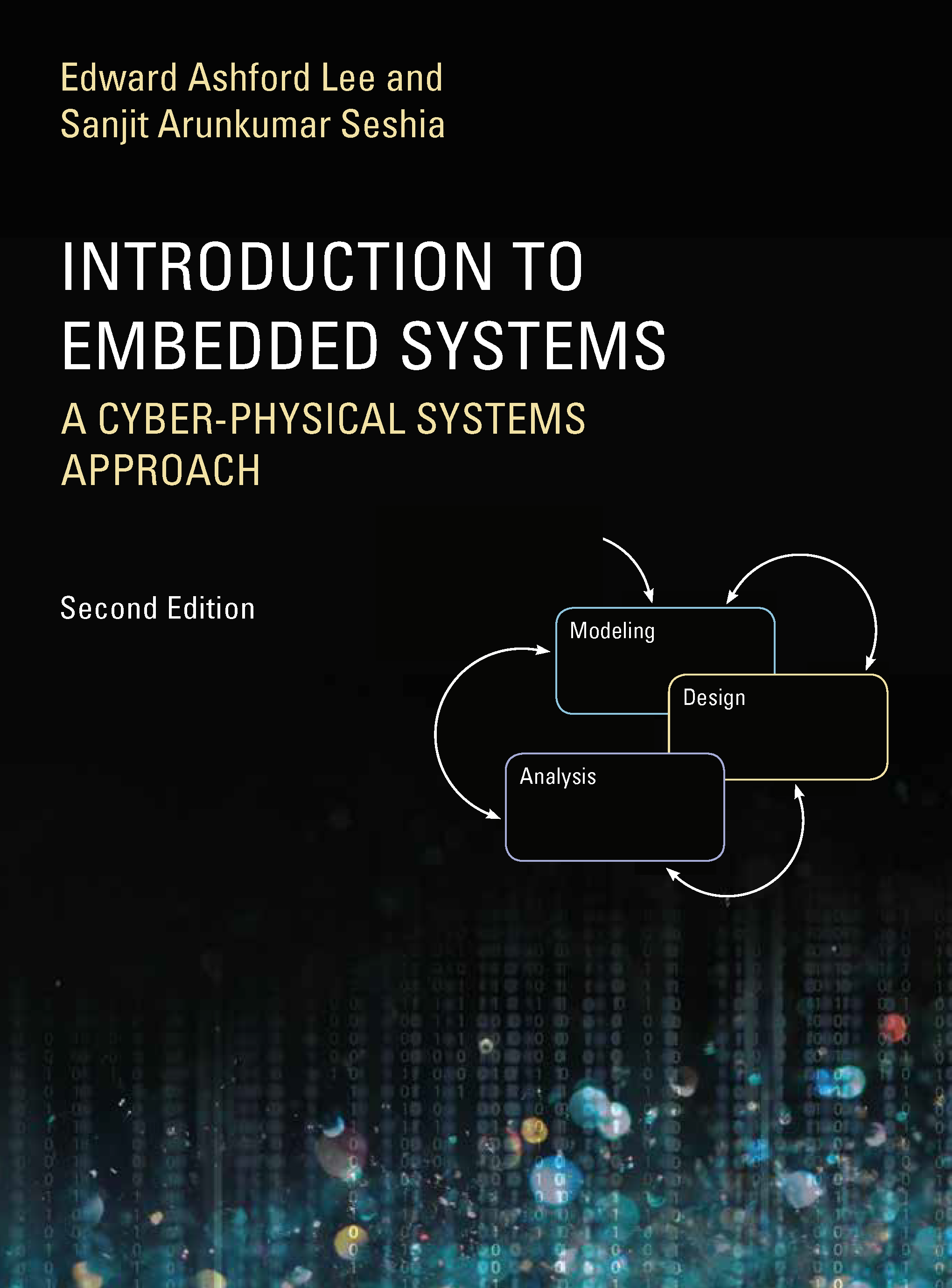Lee Seshia Solution Manual

Solution: Suppose the initial state is chosen to be (red, none) and sometime in the first 60 reactions transitions to (red, waiting). Then eventually the composite machine will transition to (green, waiting), after which all reactions will stutter. 24 Lee & Seshia, Introduction to Embedded Systems, Solutions. CSCE 236: Embedded Systems Instructor. Edward Lee and Sanjit Seshia, Introduction to Embedded Systems, A Cyber-Physical Systems. Is not ok to show someone your.
Books Published By Edward A. Lee Edward Ashford Lee,, MIT Press, 2017. This book explores how engineers use models. Lee argues that these models are not discovered preexisting truths, but rather are invented in a fundamentally human creative process. But there are limits. Lee contests the runaway enthusiasm of technology boosters who claim that everything is computation—that even such complex phenomena as human cognition are software operating on digital data.
In this view, humans become superfluous. But instead of being displaced by technology, humans are coevolving with it as it complements our cognitive and physical capabilities. Seshia,, MIT Press, Second Edition, 2017, available as a paperback and PDF download. This book strives to identify and introduce the durable intellectual ideas of embedded systems as a technology and as a subject of study.
The emphasis is on modeling, design, and analysis of cyber-physical systems, which integrate computing, networking, and physical processes. The book is intended for students at the advanced undergraduate level or the introductory graduate level, and for practicing engineers and computer scientists who wish to understand the engineering principles of embedded systems. Claudius Ptolemaeus, editor,, Ptolemy.org, 2014, available as a free PDF download, a low-cost paperback, and (also from ). This book is a definitive introduction to models of computation for the design of complex, heterogeneous systems. It has a particular focus on cyber-physical systems, which integrate computing, networking, and physical dynamics. The book captures more than twenty years of experience in the Ptolemy Project at UC Berkeley, which pioneered many design, modeling, and simulation techniques that are now in widespread use.
All of the methods covered in the book are realized in the open source Ptolemy II modeling framework and are available for experimentation through links provided in the book. Jensen, Edward A. Lee, and Sanjit A. Seshia,, 2014, available as a free PDF download. A laboratory companion to providing a suite of laboratory exercises and software. Varaiya,, Second Edition, LeeVaraiya.org, 2011, available as a free PDF download and low-cost paperback.
This book provides an accessible introduction to signals and systems for electrical engineering, computer engineering, and computer science students, and is based on several years of successful classroom use at the University of California, Berkeley. The material starts with an early introduction to applications, well before students have built up enough theory to fully analyze the applications. This motivates students to learn the theory and allows students to master signals and systems at the sophomore level. The material motivates signals and systems through sound and images, as opposed to circuits, and as such calculus is the only prerequisite.
Messerschmitt,, Kluwer Academic Press, 2004 (third edition). This book is intended for designers and would-be designers of digital communication systems. The general approach of the book is to extract the common principles underlying a range of media and applications and present them in a unified framework.
Specifically, we treat the transport of bit streams from one geographical location to another over various physical media, such as wire pairs, coaxial cable, optical fiber, and radio. We also treat multiple-access channels, where there are potentially multiple transmitters and receivers sharing a common medium. Bhattacharyya, P. Murthy, and E.
Bmw torque specs pdf. Asus ptgd1 la. Lee, Software Synthesis from Dataflow Graphs Kluwer Academic Press, 1996. This book studies the problem of synthesizing software for embedded signal processing systems starting from applications expressed as synchronous dataflow (SDF) graphs. After a comprehensive review of the theory behind SDF, techniques are given to optimize primarily the program memory size and secondarily the data memory size. To accomplish this, SDF graphs describing multirate signal processing applications are scheduled into nested loops. A formal theory for constructing and manipulating these loops is developed, and a class of looping structures, called single appearance schedules, is shown to be the most efficient with respect to code size. The existence of such structures is studied, and algorithms for optimally constructing them are given.